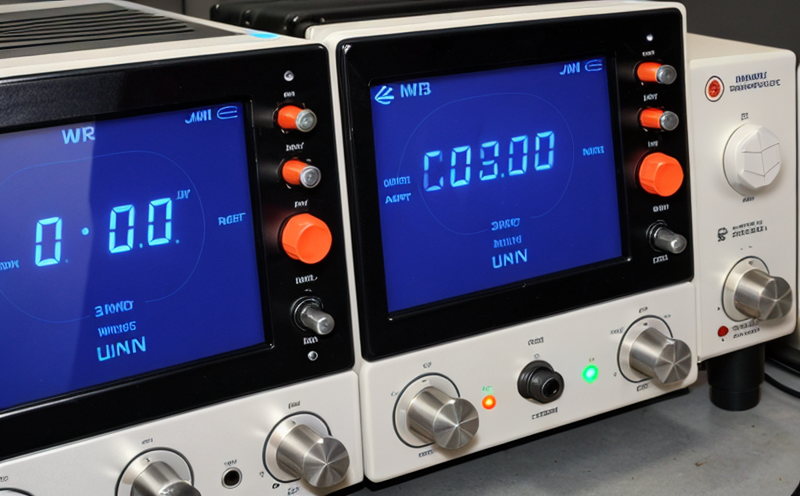FCC Part 90 Private Land Mobile Radio RF Testing for IoT Devices
When it comes to wireless communication and radio frequency (RF) testing in the context of smart home and IoT devices, particularly those designed for private land mobile operations under FCC Part 90 regulations, compliance is not merely a box to check but a critical step toward ensuring safety, reliability, and interoperability. This section aims to provide an in-depth understanding of the requirements, challenges, and best practices involved in this specialized testing.
FCC Part 90 specifies rules for private land mobile radio services designed to meet specific needs of various industries such as public safety, utilities, transportation, and more recently, consumer electronics including IoT devices. These regulations ensure that devices operating within these bands do not interfere with authorized users or services. This is particularly important in the growing IoT ecosystem where numerous wireless devices are expected to coexist harmoniously.
RF testing under FCC Part 90 involves a series of rigorous tests aimed at ensuring that the device adheres to the emission and power output limits set by the regulations. The test setup typically includes specialized equipment such as spectrum analyzers, antenna testers, and environmental chambers designed to simulate various operational environments. Compliance with these standards is essential not only for legal reasons but also to maintain high-quality service and prevent interference issues.
The process of RF testing under FCC Part 90 begins with a detailed review of the device's technical specifications against the regulatory requirements. This includes determining the frequency bands in which the device operates, the power output limits, and the emission levels that are acceptable. Once these parameters are established, the actual testing can commence using appropriate equipment.
One of the key challenges in this type of testing is ensuring that the device meets all operational parameters under various environmental conditions. This necessitates the use of specialized chambers capable of simulating different climates and altitudes to accurately assess how the device performs across a wide range of scenarios. The results of these tests are then meticulously documented, providing insights into any potential issues or areas for improvement.
Another critical aspect is ensuring that the device does not interfere with other devices operating in the same frequency bands. This requires comprehensive testing to ensure that emissions fall within acceptable limits and do not cause harmful interference. The results of these tests are crucial for demonstrating compliance and can significantly impact a company's ability to bring its product to market.
The importance of RF testing under FCC Part 90 cannot be overstated, especially as the IoT landscape continues to evolve. As more devices become interconnected, ensuring that they operate within safe limits is paramount. This not only protects users but also helps in maintaining a robust and reliable communication network.
Scope and Methodology
| Parameter | Description |
|---|---|
| Frequency Bands | The specific bands in which the device operates, such as 902-928 MHz or 2405-2483.5 MHz. |
| Power Output Limits | The maximum power output allowed for the device, typically measured in watts (W). |
| Emission Levels | The permissible levels of RF emissions that the device can generate. |
| Testing Methodologies | Description |
|---|---|
| Spectrum Analysis | Measurement of the frequency spectrum to ensure compliance with emission limits. |
| Antenna Testing | Evaluation of the antenna's performance and radiation patterns. |
| Environmental Chamber Testing | Testing in controlled environments simulating various operational conditions. |
Benefits
The benefits of undergoing FCC Part 90 RF testing for IoT devices are multifaceted. Firstly, it ensures that the device is safe and reliable, operating within specified power output limits and emission levels without causing harmful interference to other devices or services. This not only protects users but also helps in maintaining a robust communication network.
Compliance with FCC Part 90 standards can significantly enhance a company's reputation by demonstrating its commitment to quality and safety. It opens doors for market entry, particularly into the United States where compliance is mandatory for many devices operating within these frequency bands. Additionally, it ensures that the device meets all operational parameters under various environmental conditions, providing peace of mind for users.
For R&D engineers, this testing provides valuable insights into potential issues and areas for improvement. It allows them to refine their designs and ensure that the final product meets all regulatory requirements before mass production begins. This can lead to significant cost savings by identifying and rectifying problems early in the development process.
Eurolab Advantages
At Eurolab, we pride ourselves on providing comprehensive and accurate RF testing services for IoT devices under FCC Part 90 regulations. Our expertise in this field is backed by years of experience and a team of highly qualified engineers who stay updated with the latest regulatory changes.
We offer a range of services tailored to meet your specific needs, including:
- Comprehensive RF testing for various frequency bands
- Emission and power output compliance checks
- Environmental chamber testing in controlled conditions
- Detailed reporting and analysis of test results
We utilize state-of-the-art equipment to ensure precise measurements and accurate results. Our environmental chambers are capable of simulating a wide range of operational environments, providing comprehensive data for robust product development.
Our commitment to quality is reflected in our adherence to international standards such as FCC Part 90, ensuring that your device meets all regulatory requirements. We also offer support throughout the entire testing process, from initial consultation to final certification, making it easier for you to navigate through the complexities of compliance.





